22 Best Places to Visit in Rome | 2024 (with Photos)

Rome, the Eternal City, is a must-visit destination for any traveler. The Italian capital city is known for its rich history, art, and delicious cuisine.
While the Colosseum, the Roman Forum and the famous churches are essential attractions in Rome, there is so much more to explore.
In this guide, we take you on a journey to discover 22 of the best places to visit in Rome, from ancient ruins to squares filled with cafes and street performers.
Whether you are a first-time visitor or a seasoned traveler, there is always something new to discover during your Roman holiday.
Most Recommended Thing to Do
Top Choice Hotel
Hotel Eden
Our Top Choice Restaurant
Our Top Choice Bar for Nightlife
Best Time to Visit
Spring or fall; avoid summer and winter crowds.
Average Temperature
The average temperature in Rome, Italy is mild.
Transportation Options
Buses, trams, metro, taxis, bikes, scooters, walking, rideshare.
Average Cost ($, $$, $$$)
$$
My Top Recommendation
Start your day with a leisurely stroll along the Tiber River, where the gentle breeze carries the whispers of centuries-old tales. Make sure to visit the Vatican City, where the majestic St. Peter's Basilica and Michelangelo's breathtaking frescoes in the Sistine Chapel will leave you in awe.
Indulge in delectable Italian cuisine at local trattorias, savoring every bite of homemade pasta and gelato. As dusk falls, climb the Spanish Steps to the Piazza Trinità dei Monti for a panoramic view of the city bathed in a golden glow.
What You'll Need to Bring
- Passport
- Comfortable walking shoes
- Travel adapter
What Not to Miss
- Colosseum
- Vatican City
- Trevi Fountain
- Pantheon
- Roman Forum
What to Avoid
- Pickpocketing and petty theft
- Eating near major tourist attractions
- Using unlicensed taxis
Table of Contents
1. The Colosseum
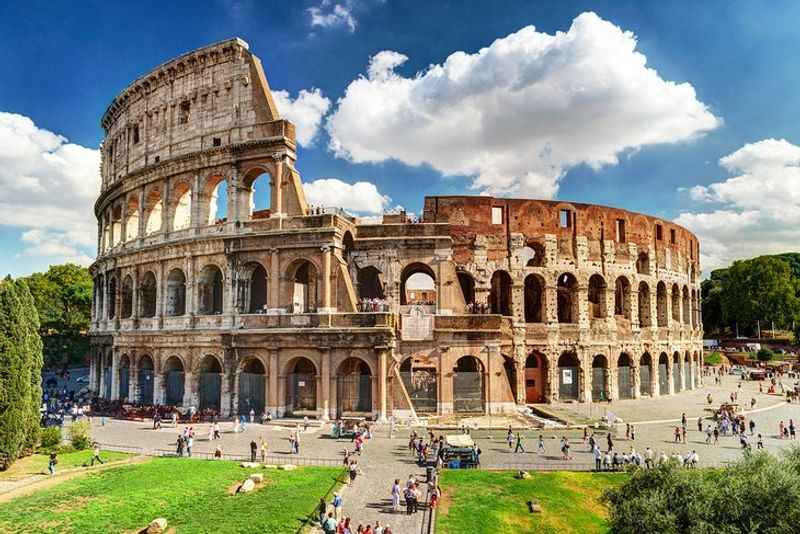
The Colosseum is an iconic symbol of the ancient Roman Empire. It was built over 2,000 years ago and could hold up to 50,000 spectators.
It was used for public spectacles, such as gladiator fights, animal hunts, and mock sea battles.
The Colosseum is a testament to the incredible engineering skills of the ancient Romans and their love for entertainment.
Visiting the Colosseum is a great way to experience a piece of ancient history firsthand.
2. The Pantheon
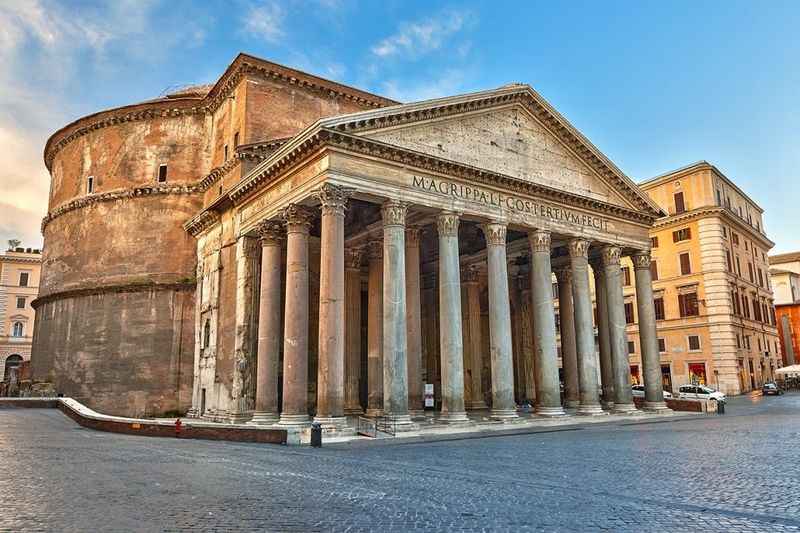
Emperor Hadrian commissioned the construction of the Pantheon in 118 AD. Originally built as a place of worship for the Roman gods, it is probably the best-preserved ancient building in Rome.
The temple has been used as a Christian church since the 7th century and is home to numerous tombs of famous Italian kings, as well as the painter Raphael.
The Pantheon embodies the greatness of the Roman Empire and is a testament to the ingenuity of the ancient Romans.
3. The Roman Forum
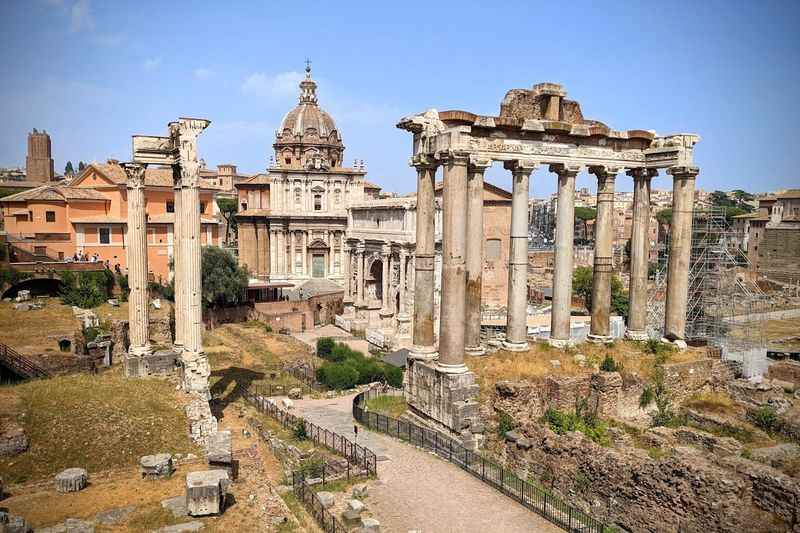
The Roman Forum is also one of the top sights in Rome. This sprawling plaza used to be the center of political and social life in ancient Rome.
Today, the Roman Forum is home to some of the most impressive ruins in the city.
The Roman Forum is home to numerous ancient ruins and historical landmarks, including the Temple of Caesar, the Arch of Titus, and the Temple of Vesta.
Visitors to the Roman Forum can explore the ancient ruins, marvel at the stunning architecture, and learn about the history of ancient Rome.
4. Vatican City
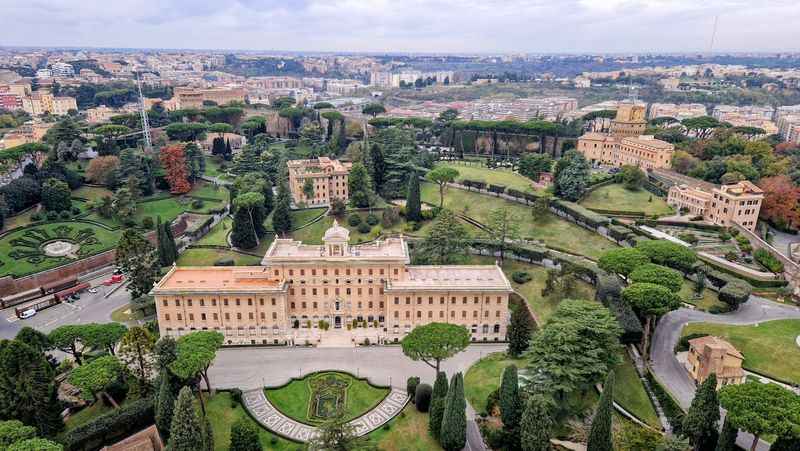
Vatican City is the smallest sovereign state in the world and is home to some of the most important cultural landmarks in the world.
The city-state is the headquarters of the Roman Catholic Church and home to St Peter's Square.
Visitors to Vatican City can explore the magnificent St. Peter's Basilica, the awe-inspiring Sistine Chapel, and the Vatican Museums, which are home to a vast collection of art and artifacts from throughout history, including works by artists such as Michelangelo, Raphael, and Botticelli.
5. The Sistine Chapel
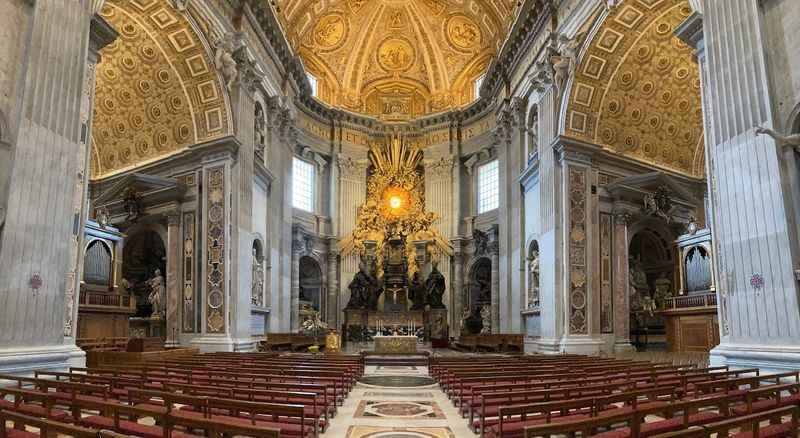
The Sistine Chapel is one of the most famous cultural landmarks in the world, located within the Vatican City in Rome.
It was built in the 15th century and is known for its stunning Renaissance art and architecture, including the famous ceiling painted by Michelangelo.
The Sistine Chapel is part of the Vatican Museums and offers visitors a unique opportunity to see some of the most famous works of art in the world.
Visitors can marvel at the incredible ceiling of the chapel, including Michelangelo's iconic "Creation of Adam" and "The Last Judgment."
6. Vatican Museums
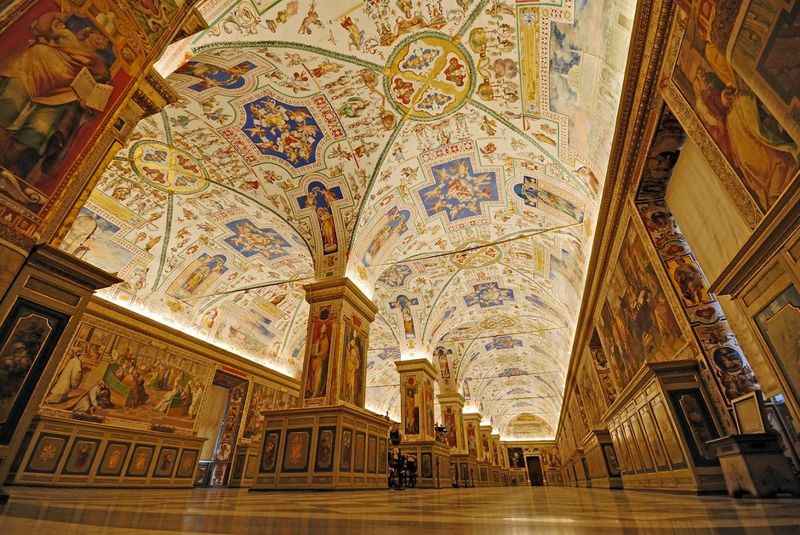
The Vatican Museums are a treasure trove of art and culture located within the walls of Vatican City.
The museums contain an impressive collection of art and artifacts that have been collected by the Catholic Church over the centuries.
One of the highlights of the museum is the Raphael Rooms, a series of four rooms painted by the famous Italian artist Raphael in the early 16th century.
The Raphael Rooms are considered some of the most important works of art from the High Renaissance period.
7. Fontana di Trevi (Trevi Fountain)
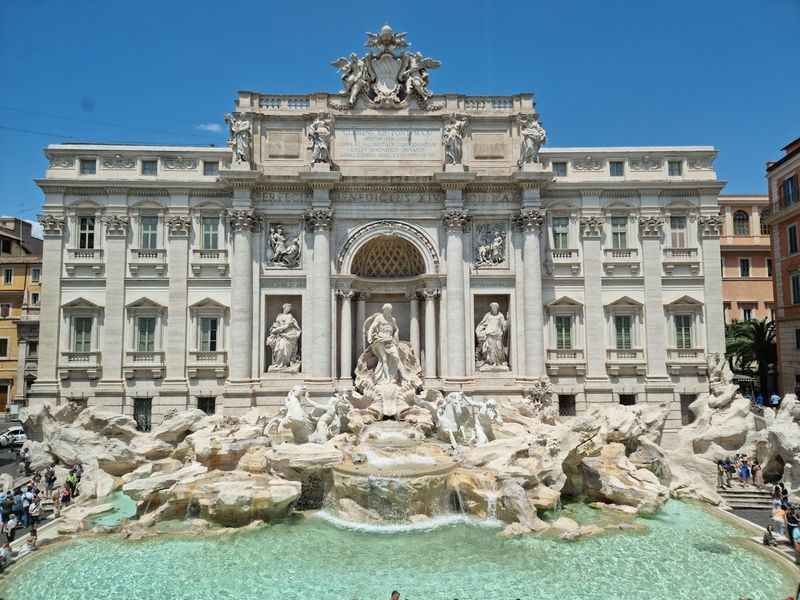
The Trevi Fountain is one of the most popular tourist attractions in Rome and probably the most famous fountain in the world.
Built in the 18th century, the fountain on the Piazza di Trevi features a magnificent sculpture of the god of the sea, Neptune, flanked by two tritons.
Visitors can toss a coin into the famous Trevi fountain, which is said to ensure a return trip to Rome, as well as good luck and prosperity.
The fountain is a true masterpiece of Baroque art, with its intricate carvings, glistening waters, and stunning sculptures.
8. Spanish Steps and Piazza di Spagna

The Spanish Steps are a grand staircase of 135 steps that connect the Piazza di Spagna with the French Church Trinità dei Monti at the top.
The steps were built in the 18th century and are a popular gathering spot for locals and tourists alike.
The Piazza di Spagna, at the base of the steps, is a bustling square that is home to several cafes, restaurants, and designer shops.
Visitors to the Piazza di Spagna can enjoy the stunning Baroque architecture and soak up the atmosphere of one of Rome's liveliest neighborhoods.
9. Piazza Navona
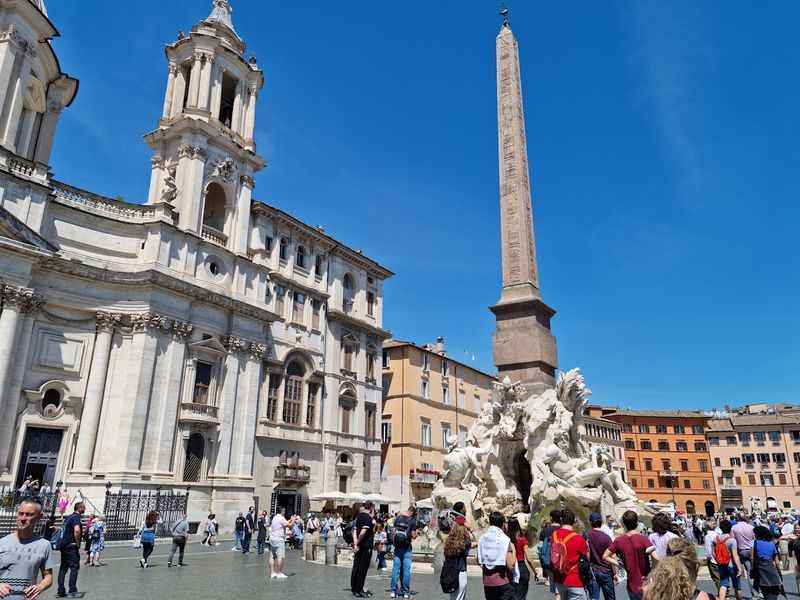
Piazza Navona is one of the most beautiful squares in Rome. It was built in the 1st century AD and is known for its stunning Baroque architecture, including the famous Fontana dei Quattro Fiumi (Fountain of the Four Rivers) designed by Bernini.
Piazza Navona is also home to several other fountains, beautiful buildings, and a lively atmosphere that draws visitors from all over the world.
Piazza Navona is a great place to enjoy some Italian gelato, watch the street performers, and take in stunning architecture.
10. Villa Borghese

Villa Borghese is a beautiful and expansive public park located in the heart of Rome.
Villa Borghese covers an area of over 80 hectares and is home to a variety of attractions, including museums, galleries, fountains, and gardens.
One of the most popular attractions in the park is the Galleria Borghese, which houses an impressive collection of art, including works by Caravaggio, Rubens, and Leonardo da Vinci.
Visitors to Villa Borghese Gardens can take a stroll, relax by the lake, or enjoy a picnic on the grass.
11. Piazza del Popolo and Santa Maria del Popolo
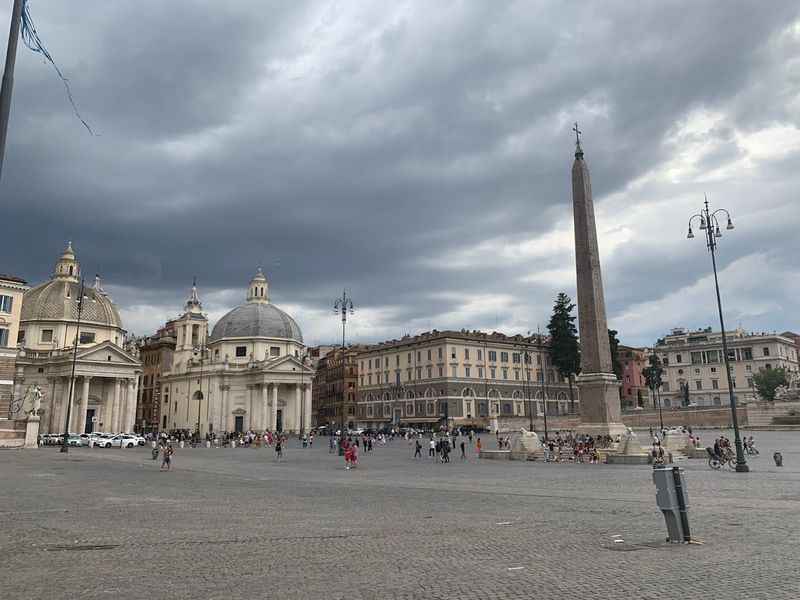
Piazza del Popolo is one of the most famous public squares in Rome, known for its grandeur and historical significance.
At the heart of the square is the Egyptian obelisk, which dates back to the reign of Pharaoh Ramses II in the 13th century BC.
Surrounding the square are several important landmarks, including the city gate ‘Porta del Popolo' and the Santa Maria del Popolo church, which features beautiful artwork by Caravaggio and Raphael.
The church has a fascinating history, having been built on the site of an ancient Roman temple, and later associated with the legendary Emperor Nero.
12. Palatine Hill
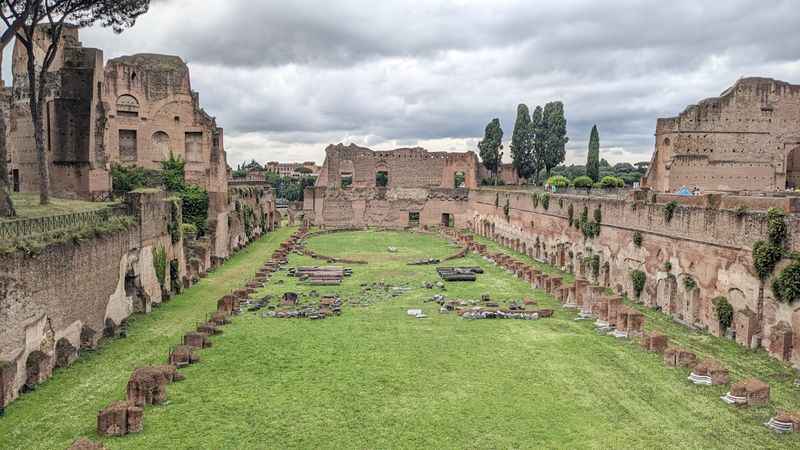
Palatine Hill is one of the seven hills of Rome and is considered the birthplace of the city.
It is located in the central part of Rome and is known for its stunning views of the Roman Forum and the Colosseum.
Visitors to Palatine Hill can explore the ruins of several ancient palaces, including the Palace of Domitian and the Palace of Augustus, as well as the remains of the Hippodrome, which was once used for chariot races.
The hill is also home to the Farnese Gardens, a stunning botanical garden.
13. St. Peter's Basilica and St. Peter's Square
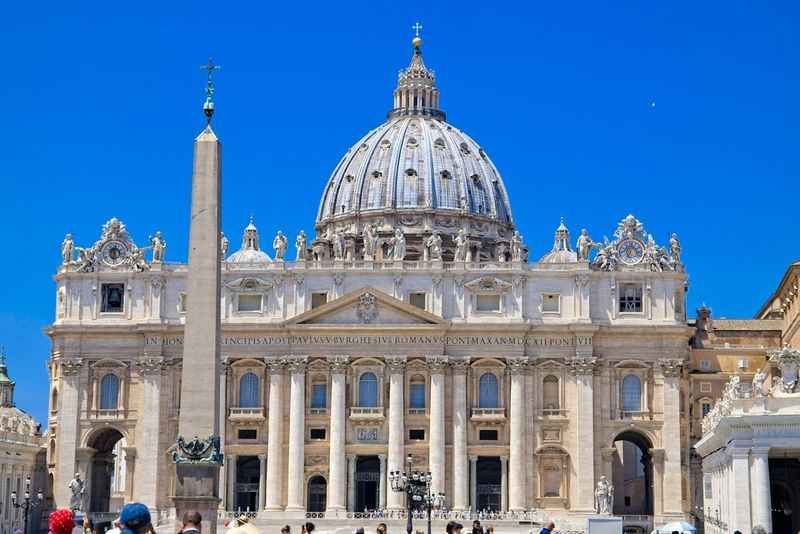
St. Peter's Basilica, located within the Vatican City, is one of the most famous churches in the world and is a must-visit destination for anyone traveling to Rome.
The Basilica is known for its stunning Renaissance and Baroque architecture, including the famous dome designed by Michelangelo.
Visitors to St. Peter's Basilica can marvel at Michelangelo's "Pieta" sculpture and Bernini's "Baldacchino" canopy.
St. Peter's Basilica is the largest church in the world and home to the tomb of St. Peter. Another highlight is the Egyptian obelisk in the center of St. Peter's Square.
14. Via Appia Antica
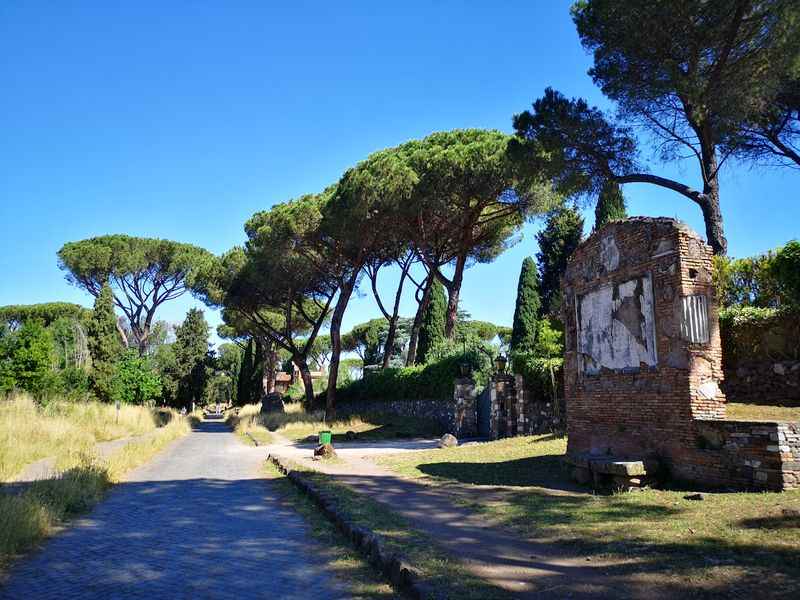
Via Appia Antica, or the Appian Way, is one of the oldest and most famous roads in Rome.
Originally built in 312 BC, the road stretches for over 350 miles. It was located just outside the city walls and was an important transportation route in ancient Rome.
Some of the highlights of a visit to the Appian Way include the Catacombs of San Callisto and San Sebastiano, where early Christians were buried, the Villa of the Quintilii, a sprawling estate once owned by wealthy Roman nobles, and the Circus of Maxentius.
15. The Circus Maximus

The Circus Maximus is an ancient Roman chariot racing stadium located in the valley between the Aventine and Palatine hills in Rome, Italy.
It was originally built in the 6th century BC and was expanded over the centuries to become the largest stadium in the Roman Empire.
The site hosted various types of events, including chariot races, gladiatorial contests, and other Roman games, which were an important part of the city's culture and entertainment.
With its grand size and historical importance, the Circus Maximus offers a fascinating glimpse into Roman life and the ancient world.
16. Piazza Venezia
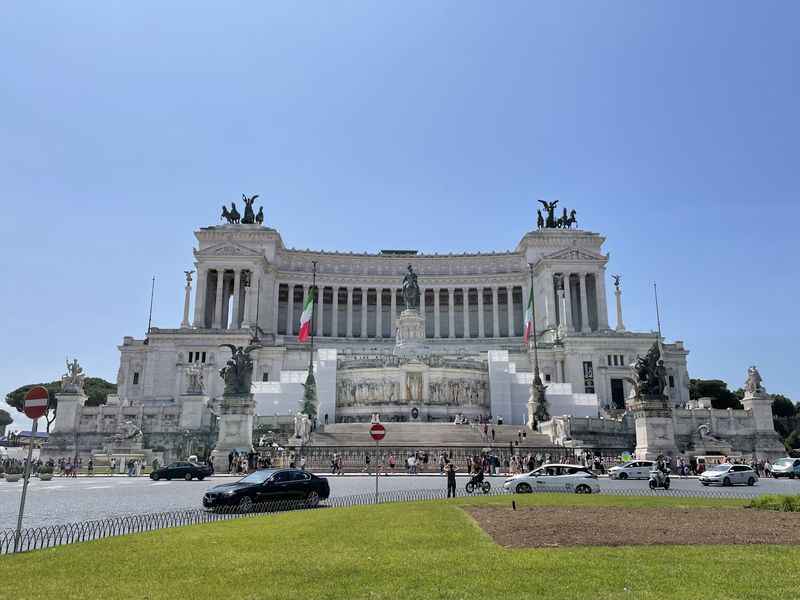
Piazza Venezia is a famous square located in the heart of Rome, Italy.
The square is home to some of the most important landmarks in the city, including the Altare della Patria (the Monument to Vittorio Emanuele II), the Palazzo Venezia, and the Trajan's Column.
Piazza Venezia is a bustling hub of activity. Visitors can admire the stunning architecture and monuments, take a stroll through the square's beautiful gardens, or enjoy a coffee or gelato in one of the many cafes and restaurants in the area.
17. Campo dei Fiori Market

Campo dei Fiori market is one of the most lively outdoor markets in Rome.
Located in the heart of the historic city center, it offers a colorful array of fresh fruits, vegetables, meats, cheeses, flowers, and other local products.
The market's history dates back to the 19th century and it was once a gathering place for local farmers and traders.
Today, it is a popular destination for tourists and locals alike, who come to soak up the lively atmosphere and experience the authentic flavors of Rome.
18. Capitoline Hill and the Capitoline Museums
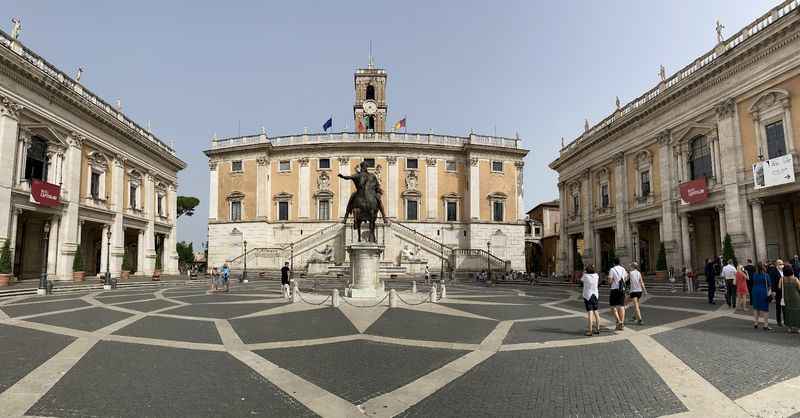
Capitoline Hill, or Campidoglio in Italian, is one of the seven hills of Rome and an important historical site.
It was the political and religious center of ancient Rome and is now home to many of the city's most important museums and monuments.
Visitors can admire the equestrian statue of Marcus Aurelius in the center of Piazza del Campidoglio, as well as the famous Capitoline Museums, which house a vast collection of ancient artifacts, including the famous Capitoline Wolf sculpture.
19. Vittoriano
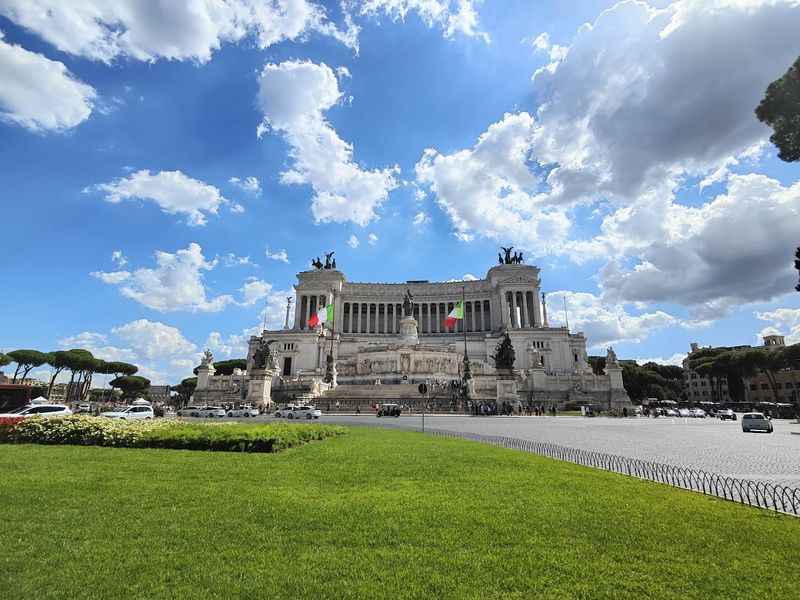
The Vittoriano, also known as the Altare della Patria, is a monument located in Piazza Venezia. It was built in honor of Victor Emmanuel II, the first king of a unified Italy, and is one of the most important landmarks in the city.
The massive white marble structure features a grand staircase, numerous sculptures, and an equestrian statue of Victor Emmanuel II.
The Vittoriano is a symbol of Italy's national identity and a must-visit destination for anyone traveling to Rome.
20. Castel Sant'Angelo
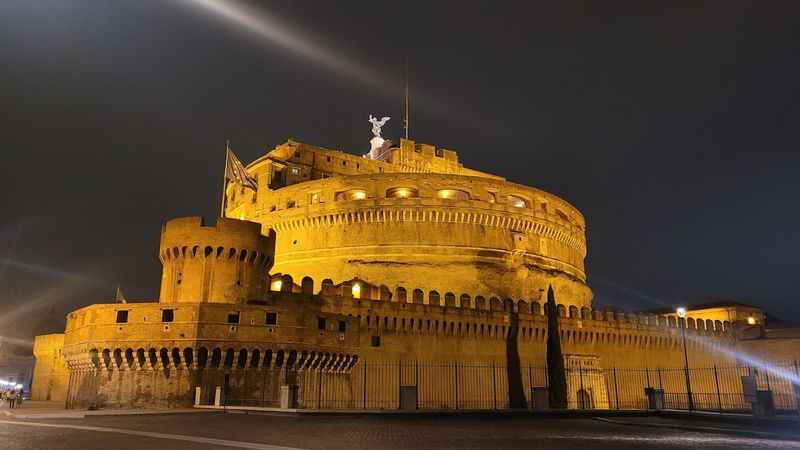
Castel Sant'Angelo is a towering cylindrical fortress located on the banks of the Tiber River in Rome.
Originally built as a mausoleum for the Roman emperor Hadrian, it was later converted into a castle and used as a papal residence and a prison.
Visitors to the mausoleum of Emperor Hadrian can explore the castle's many levels and take in stunning views of Rome from the castle's ramparts and terraces.
A visit to Castel Sant'Angelo offers a unique opportunity to experience the city's ancient architecture and engineering up close.
21. Largo di Torre Argentina
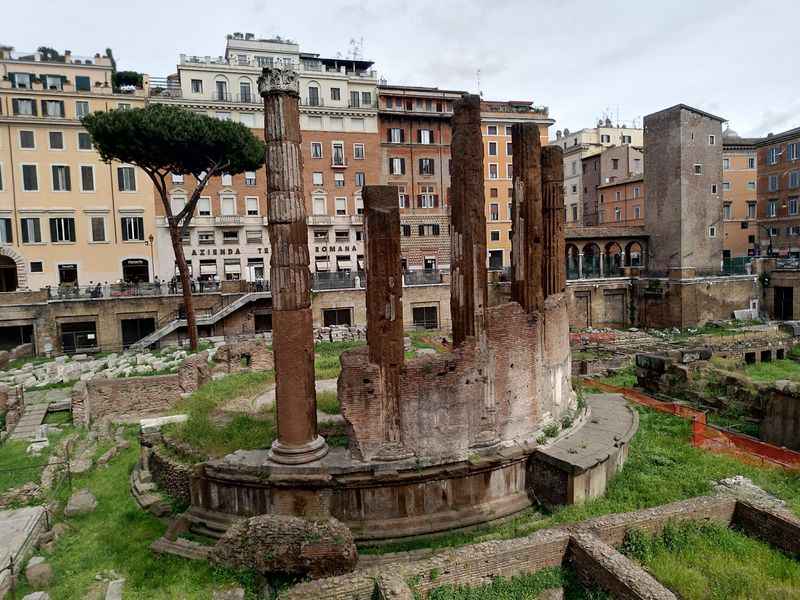
Largo di Torre Argentina is a square located in the heart of Rome, famous for being the site of the remains of four ancient Roman temples, and the spot where Julius Caesar was assassinated.
Today, the square is home to a sanctuary for cats, where hundreds of cats roam free among the ruins.
The place offers a unique opportunity to interact with Rome's famous feline residents, making it a must-visit destination for cat lovers and history buffs alike.
22. Rome's National Museum
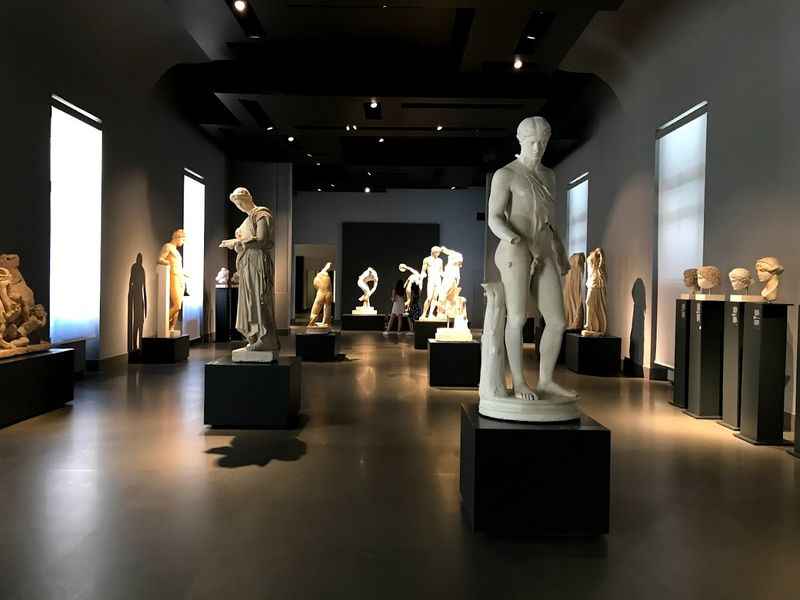
Rome's National Museum is a must-visit destination for history buffs and art lovers alike.
It boasts an impressive collection of ancient Roman artifacts and works of art, including sculptures, mosaics, frescoes, and other decorative objects.
The museum's exhibits span over 1,000 years of Roman history, from the Republic to the Empire, including the iconic Farnese Hercules statue, the Hellenistic-era Boxer at Rest, and the beautiful frescoes from the Villa of Livia.
FAQs: The Best Places to Visit in Rome
In this section, we provide answers to common questions relating to the best places to visit in this city.
What is the most visited place in Rome?
The most visited place in Rome is undoubtedly the Colosseum. This ancient amphitheater was completed in AD 80. Millions of tourists flock to the Colosseum every year to marvel at its architecture, learn about its bloody history, and take in the stunning views of the surrounding area.
What you shouldn't miss in Rome?
There are so many incredible sights to see in Rome, but some of the things you definitely shouldn't miss include the historic center, the Vatican Museums, the Pantheon, the Trevi Fountain, Piazza Navona, St. Peter's Basilica at St. Peter's Square, the Roman Forum, Piazza del Popolo, the Mausoleum of Roman Emperor Hadrian, and the Roman houses and baths in the Forum of Trajan.
You should also make sure to visit Rome's National Museum, try some of the local cuisine, and explore some of the charming neighborhoods like Trastevere and Monti.
What should be visited in Rome?
You should visit the Colosseum, the Roman Forum, the Pantheon, the Trevi Fountain, the Vatican Museums (especially the Sistine Chapel), St. Peter's Basilica at St. Peter's Square, the Spanish Steps, the Capitoline Museums at Piazza del Campidoglio, Basilica di Santa Maria Maggiore, the church of San Luigi dei Francesi, Basilica di San Clemente, and the Piazza Navona.
You should also make time to stroll around the charming streets of the historic center, watch the street artists, take in the views from Gianicolo Hill, and enjoy the best ice cream when you visit Rome.
What is the most beautiful area of Rome?
Rome is full of beautiful areas, but one of the most picturesque places to see in Rome is the Trastevere neighborhood. This bohemian area on the west bank of the Tiber River is known for its narrow streets, colorful buildings, and lively nightlife.
The Pincio, one of Rome's oldest gardens commissioned by the Pinci family in the fourth century, is another lovely area. It is part of Villa Borghese and is famous for its Vatican view at sunset from overlooking Piazza del Popolo. You can also easily undertake a number of day trips from Rome and explore more beautiful areas.
Summing Up: 22 Best Places to Visit in Rome
Rome is a city that offers a wealth of attractions that make a Rome tourist map hard to read. From the Roman Forum to the stunning art of the Vatican Museums, the 22 exciting Rome attractions will leave you breathless.
Whether you're strolling through the beautiful Piazza Navona or climbing the Spanish Steps, every corner of Rome is filled with history and beautiful architecture.
Don't forget to visit St Peter's Square, the Villa Borghese Gardens, Piazza Venezia, Piazza del Campidoglio, and other top sights during your city trip to fully experience the beauty and grandeur of Rome's main tourist attractions.
So book your tickets and visit Rome to experience these wonders for yourself and create memories of the Eternal City that will last a lifetime.













